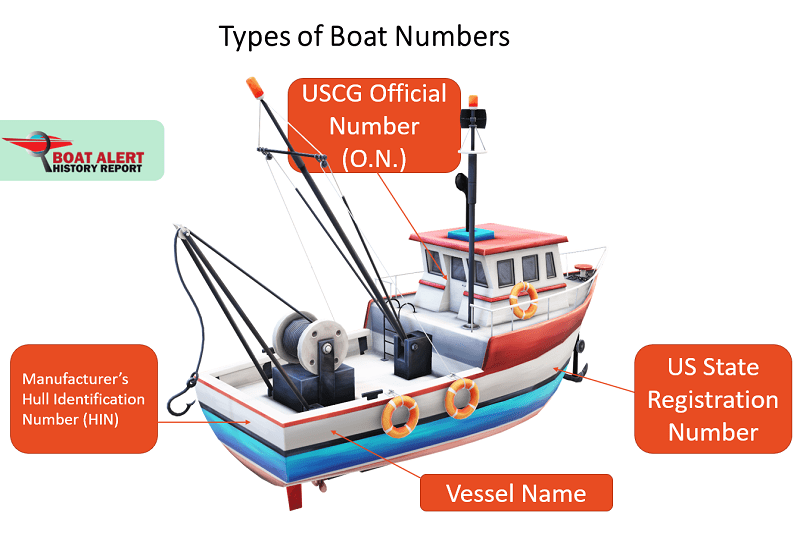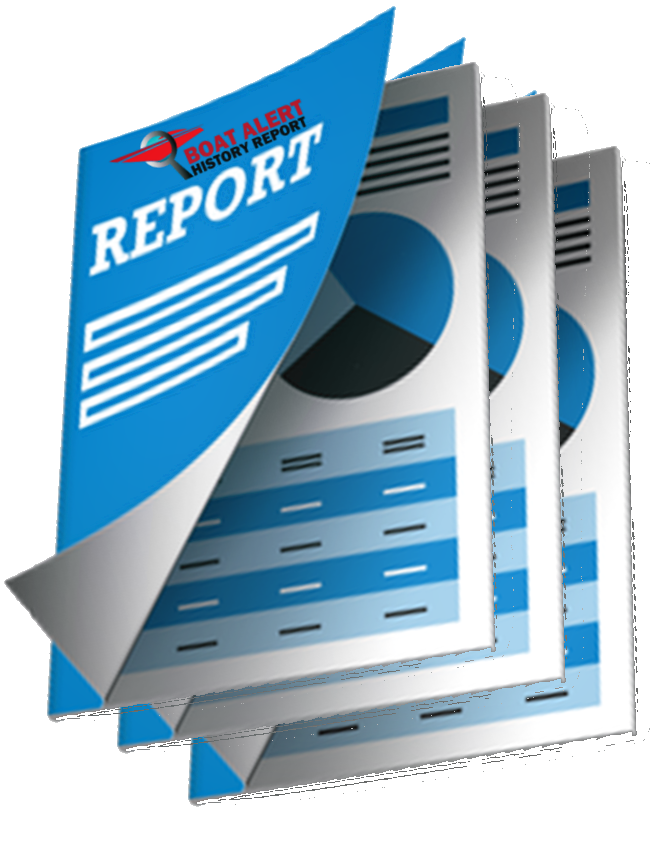How to Verify Boat VIN
In this article we cover steps and tools how to verify a boat’s VIN and why its important to do so. This will help you check boat vin number free.
Boat-Alert.com has gathered millions of records one boats and can help you verify a boat’s VIN. This data is key for buyers looking at used boats.
Before buying a used vessel, check your boat’s VIN or HIN. This lets you learn about the boat’s past, specs, and possibly who owned it.
We have a helpful video here about HIN Checks:
Verifying a Boat’s HIN
Check your boat’s VIN with trusted sites like Boat Alert to find its history. If you are not sure about your HIN and want to verify it for accuracy, then try www.hindecoder.com to validate the HIN first.
Looking up a boat’s registration number or serial number is crucial. It reveals key info like accidents, hurricanes, fires, theft, and other harm. This info lets you bargain for better deals. It also keeps you from buying a trouble boat. Make sure your boat-buying process is safe and clear of any liens.
Understanding Boat VIN or HIN
In the boating world, a boat’s VIN is known as the Hull Identification Number (HIN). This 12-character code tells us a lot about a vessel but not as much as a car’s VIN. Both cars and boats are prone to HIN cloning.
The HIN has 12 letters and numbers, each with its own role. The first three show the maker’s code (MIC), given by the U.S. Coast Guard. Then comes the boat’s special serial number. Next, a letter and a number tell the month and year it was certified. Finally, the last two characters show the boat’s model year.
For a helpful guide, see our HIN Types described here.
When you’re buying or selling a boat, checking the HIN is very important. Understanding the HIN and using tools to get more details can help you make smart decisions. By being well-informed, you can have a smooth experience buying or selling a boat.
Locating the Boat VIN
Need to check a boat’s VIN or its hull number? Knowing where to look is key. Since November 1, 1972, boats must have a Hull Identification Number (HIN). This 12-digit code is crucial for checking a boat’s background and making sure it’s legit. It will be found on the Transom so you validate it on our site.

To find the HIN, start at the boat’s transom. Look near the top, on the right side. If the boat has no transom, search on the starboard, within a foot from the stern. Catamarans and pontoon boats place the HIN on the aft crossbeam, close to the starboard side.
When you’ve found the HIN, check how it looks.
Buying an older boat made pre-1972 might mean it does not have a VIN. However, if it’s from after November 1972, a Hull ID is a must. By knowing about the HIN, you can easily check if a boat’s VIN is valid. This information is crucial when making a purchase or registering a boat.
Methods to Verify Boat VIN
The first way to verify a boats VIN is to use a boat vin decoder, like the one found at www.hindecoder.com. Simply enter the boat’s HIN into the tool. This will let you check if the HIN is correct. You can find out important details like the boat’s maker and when it was built. It helps you make sure the boat you’re looking at matches its records.
A second option is to get a boat history lookup from www.boat-alert.com. This report checks the boat’s HIN against many databases. It tells you about the boat’s history as well as verify the VIN.
Boat-Alert.com HIN Search
A boat’s history affects its value – Search the vessel’s history before you dive in!
Check for accidents, auctions, theft, and registration data.
Don’t get stuck with someone else’s problem boat

Using a boat history report gives you a good look at the boat’s past. This is crucial when thinking about buying a boat. It helps you avoid any surprises or problems that might be in the boat’s history.
To make sure you’re getting all the information you need, it’s best to use both a boat vin decoder and a boat registration lookup. This way, you can buy a boat with peace of mind. You’ll know you’ve checked the boat’s details and history well.
Importance of Verifying Boat VIN Before Purchase
When looking to buy a boat, it’s key to check the Boat VIN first. This check helps make sure the boat is real and has no issues hidden.
By verifying the HIN, you can be sure that there are no typos and that you are indeed looking at the correct boat. It also helps the DNR and DMV agencies register a boat with the correct HIN.
Also, it’s vital to do a detailed search on the boat title and get its history report. but for that, you need the correct HIN first! This will give you peace of mind and help you pick wisely. The reports show details such as past owners, accidents, and repairs.
Decoding the Boat VIN
#BoatVINCheck #BoatTitle #Registration #BoatFees #BoatHistory #BoatAlert #BoatLien #OMVC #DNR #StolenBoat #DMV #BMV #BoatHINLookup
When buying a boat, it’s key to understand the hull identification number (HIN) used for the boat. This 12-character code works like a VIN for boats, giving important details about the boat’s history and where it comes from. Being able to check a boat’s VIN using a boat hin decoder gives you better information for your purchase.
- The first three characters in a HIN show the boat’s manufacturer, picked by the U.S. Coast Guard. They let you know the boat’s maker and where it’s from. Then, the following five characters are the boat’s own serial number, given by the manufacturer.
- The tenth character shows the month the boat got its safety certification, and the eleventh shows the year.
- The last two characters in a HIN show the boat’s model year.
How to verify the history for a boat by VIN?
Boat-Alert.com is a great place to check a boat VIN and get a detailed boat history report. They have over 120 million records, showing over 1.4 million bad events. This includes accidents, fire damage, safety recalls, and even cases of sinking or flooding. Using a boat vin decoder, you learn a lot about a boat’s history before buying.
When buying a boat, checking the HIN is a smart move. It can save you from expensive errors. With this check, you aim for a safer, more fun time on the water for many years.
Conclusion
Checking a boat’s Hull Identification Number (HIN) is crucial when you want to buy a boat. It tells you a lot about the boat’s past and who owned it. After 1972, all boats made in the US must have a 12-character HIN. It’s fixed in a certain place on the boat, as required by law.
Use websites like www.hindecoder.com and www.boat-alert.com to check a boat’s HIN. These tools help you verify the boat’s history before you buy it. You can also search a boat registration number to see if it’s legally registered1.
Frequently Asked Questions (FAQ)
1. How do you check a HIN number?
To check a Hull Identification Number (HIN), you can look at the boat’s transom, starboard side. Verify it with the manufacturer’s database or use online resources like the US Coast Guard’s database to check for validity and registration details.
2. How do I look up a boat by serial number?
You can look up a boat by its serial number (HIN) through various online databases, including state registration databases, the US Coast Guard’s database, or commercial boat history report services.
3. How do I find out who owns a boat in Canada?
In Canada, you can find out who owns a boat by contacting Transport Canada. They maintain a Vessel Registration Query System where you can request ownership information.
4. How do I verify my hull ID number?
Decoding a Hull ID Number involves understanding its structure:
- The first three characters are the manufacturer’s identification code.
- The next five characters are the serial number.
- The final four characters indicate the model and certification year.
Example: ACBR0089K718
ACB = Brp Marine Us Inc. (In Business)
R0089 = Boat Serial Number
K7 = Manufactured November 2017
18 = Model year 2018
5. How can I check my HIN number?
You can check your HIN number by locating it on your boat (typically on the transom), then verifying it through online databases, manufacturer records, or with the local boating authority.
6. What is a Canadian HIN number?
A Canadian HIN number is a unique identifier assigned to a boat in Canada, following a similar format to the US HIN, consisting of 12 characters that identify the manufacturer, serial number, and year of production. It might just start with CA- instead of US- but those are optional.
7. What letter does a HIN start with?
A HIN starts with the Manufacturer Identification Code (MIC), which consists of three letters assigned by the appropriate national authority.
8. What is the difference between a VIN number and a HIN?
A VIN (Vehicle Identification Number) is used for motor vehicles, while a HIN (Hull Identification Number) is used for boats. Both serve as unique identifiers for their respective types of vehicles.
9. Where can I find my HIN or SRN number?
Your HIN can typically be found on the transom of your boat, on the starboard side. The SRN (State Registration Number) is usually displayed on the hull of the boat near the bow.

10. How do I get my HIN number if I lost it?
If you lost your HIN number, you can retrieve it from your boat’s documentation, your purchase paperwork, or contact the manufacturer. You may also check with your local boating authority.
11. Can I have 2 HIN numbers?
No, each boat is assigned a single unique HIN. If your boat has two HIN numbers, one might be erroneous or indicate tampering, and you should contact the local boating authority.
12. How do I check my SRN number?
Your SRN number can be checked through your state’s boating registration database or by looking at the registration documentation provided by your state’s boating authority.
Read Related Articles:
- Jaw-Dropping AI Changes Boating!
- Indiana Boat Registration
- How to Price My Boat For Sale and Negotiate with Buyers?
- Pennsylvania Boat Registration
- District of Columbia Boat Registration – DC boat search
#VerifyBoatVIN
- NASBLA has a boat HIN validation resource as well: https://www.nasbla.org/nasblamain/nasbla-resources/hin ↩︎
Categories: To learn more about Boat-Alert.com History Reports for used boats and hin number lookup for used boat visit: www.Boat-Alert.com
